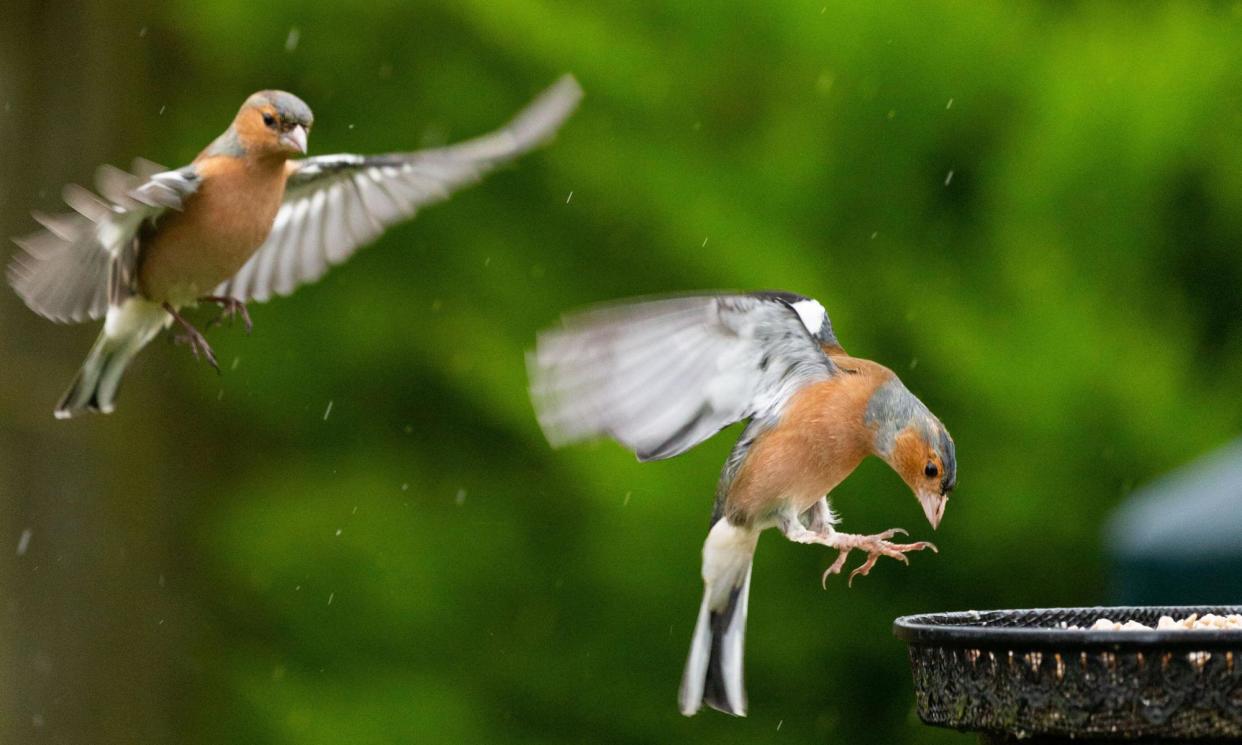Country diary: Life in slow motion reveals so much more

Scuppered by a bad back, I’ve been restricted to the couch, but I’m lucky – the bird feeder is right outside the window and it’s providing a living theatre of drama. Goldfinches and greenfinches fly down from the granny pines, an occasional great spotted woodpecker, a redpoll or two too, but it’s the siskins and chaffinches that dominate. There’s a flock of around 50 chaffinches and they’re practically all male. Their Latin name, Fringilla coelebs, speaks to this (coelebs meaning unmarried or single) and they’re sometimes known as batchelor birds. It’s a species that has a year-round surplus of males.
They’re so ubiquitous that I rarely pay them any attention, but I’m noticing their colour palette anew – the black line above the bill, their steely blue nape and crown, their rusty pink breasts and how their gorgeous olive green rumps blend into the brown of their backs.
One day, I used my phone to film the feeder in slow motion, sometimes 10 birds or more squabbling for a place. It’s mesmerising to see how quickly their wings beat; the wonder of flight, slowed down; how the wings are tucked in as they glide down; the control each bird demonstrates; how they hover with such precision, their black-and-white tails fanning out as they wait or fight for a spot; and how the siskins and goldfinches manage to repel them, at least some of the time. It’s the siskins that I have a real affection for: the females’ beautifully mottled grey-yellow plumage and the males’ lemon-lime yellow with stunning black crowns and bibs. There’s a good old squad of them.
They’ve been less present over the winter, but they’re back now for the pine cones opening. In the sunshine, their rumps are the colour of daffodils that, up here in the Highlands, are still in their full glory. I know that when I do manage out, I’ll find more yellows still. The riverbanks will be sprinkled with celandines and the woods will hold clusters of primroses. Even the bright scatter of wood anemones will have yellow anthers. Through the open window I hear the song of the willow warblers, newly returned, adding their own palette of greeny yellow too.
• Country diary is on Twitter at @gdncountrydiary


